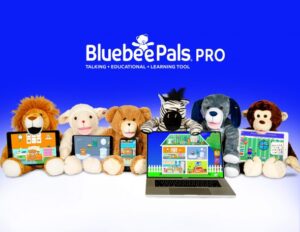What is assistive technology? Assistive technology is any device, software or equipment that can help kids with learning and attention issues work around their challenges so that they can learn, communicate and simply function better. These products can make a significant impact on student learning. They can help kids become more successful and productive students, which can help grow their confidence and independence. Ranging in levels of sophistication, assistive technology is an ever-growing and dynamic field.
Types of Assistive Technology:
“No Tech”—These items include pencil grips, post-it notes, slanted work surfaces, paper with raised lines, tactile numbers, letters or objects, magnifying bars, work organizers and weighted pencils.
“Low Tech”—These items include answer buzzers or buttons, talking calculators, microphones, switches, and tap lights.
“High Tech”—These include specialized keyboards, software applications, Text-to-Speech technology, mobile devices such as tablets and smartphones, computers, word processors, augmentative communication devices, classroom amplification systems, and computerized testing.
Assistive Technology: Affordable for Home and Classrooms
*Bluebee Pals:
Bluebee Pals are one of our favorite assistive technology learning tools! Bluebee Pals “speak” when connected by Bluetooth to a smartphone or to apps on a tablet. Their mouths open and close and their head turns in a natural speaking position which makes them come to life. They are perfect snuggly study buddies for engaging students in reading practice while reading book apps, practicing skills in educational learning apps, and in practicing and learning social skills. Used with any targeted apps with voice narration, they motivate students to want to interact and learn. They are especially fun to use when recording your child’s own voice! http://bluebeepals.com.
 *Robots: Examples: Bee-Bot and Pro-Bot, by Terrapin Software, Cozmo, by Anki & Jimu Robot BuzzBot and MuttBot Kit
*Robots: Examples: Bee-Bot and Pro-Bot, by Terrapin Software, Cozmo, by Anki & Jimu Robot BuzzBot and MuttBot Kit
Nothing captures a child’s interest quicker than robots! They are very useful, hands-on tools to keep children actively engaged while learning, and can help with teaching a variety of subjects including STEM, motion, directionality, sequencing, estimation, problem solving, programming, and math skills. They also help students practice and build social skills while working in peer groups. You can create and measure angles, learn sight reading words, strengthen coding skills, or just use robots as a fun engagement tool. With robots, children think they are playing but they are actually learning. Robots are available for all ability levels, from beginning coding to advanced. They are particularly suitable for special needs students.
 *Audio Recorders and Buttons: Many e-books have audio files and self-recording features (for auditory feedback) and smartphones and tablet computers come with text-to-speech software that can read aloud anything on your child’s screen. If a child struggles with writing or taking notes, an audio recorder can capture what the teacher says in class so your child can listen to it again at home. Fun button recorders allow the user to make choices, practice speech, give messages, practice spelling words, and record short answers.
*Audio Recorders and Buttons: Many e-books have audio files and self-recording features (for auditory feedback) and smartphones and tablet computers come with text-to-speech software that can read aloud anything on your child’s screen. If a child struggles with writing or taking notes, an audio recorder can capture what the teacher says in class so your child can listen to it again at home. Fun button recorders allow the user to make choices, practice speech, give messages, practice spelling words, and record short answers. 

*Timers: Wristwatches, hourglass timers, visual timers—these inexpensive devices help kids who have trouble with pacing. Timers can be used as visual aids to show how much time is left to complete an activity. If a child has difficulty transitioning from task to task, timers can help him mentally prepare to make the switch. Fun Time Timer by CodigoDelSur. https://itunes.apple.com/us/app/fun-time-timer/id652296774?mt=8

*Reading Guides: Reading guides are good tools for kids who have trouble with visual tracking or who need help staying focused on the page. The plastic strip highlights one line of text while blocking out surrounding words that might be distracting. The strip is also easy to move down the page as your child reads.
 *Flexible Seating:
*Flexible Seating:
For those with attention challenges and/or sitting still, students have the opportunity to wiggle or bounce while still being productive using wobble stools and exercise balls. Inflatable seat cushions are also available to help kids with sensory processing and attention issues. The cushion can provide enough movement and stimulation to help a child maximize his focus.
 *Calculators:
*Calculators:
Depending on your child’s math issues, it might be appropriate for him to use a basic calculator in class. There are also large-display calculators and even talking calculators. A talking calculator has built-in speech output to reads the numbers, symbols and operation keys aloud. It can help your child confirm that he has pressed the correct keys. Free Talking Calculator by Roundhouse Software LLC. https://itunes.apple.com/us/app/free-talking-calculator/id1087367680?mt=8 
Assistive Technology Tips:
*Having the right AT tool can make a huge difference for your child’s education.
*A good way to choose an assistive technology tool is to start with a specific struggle or need that your child has.
*Check out the Bluebee Pals Website for additional resources.https://www.bluebeepals.com/apps-bluebee-pals/
.
